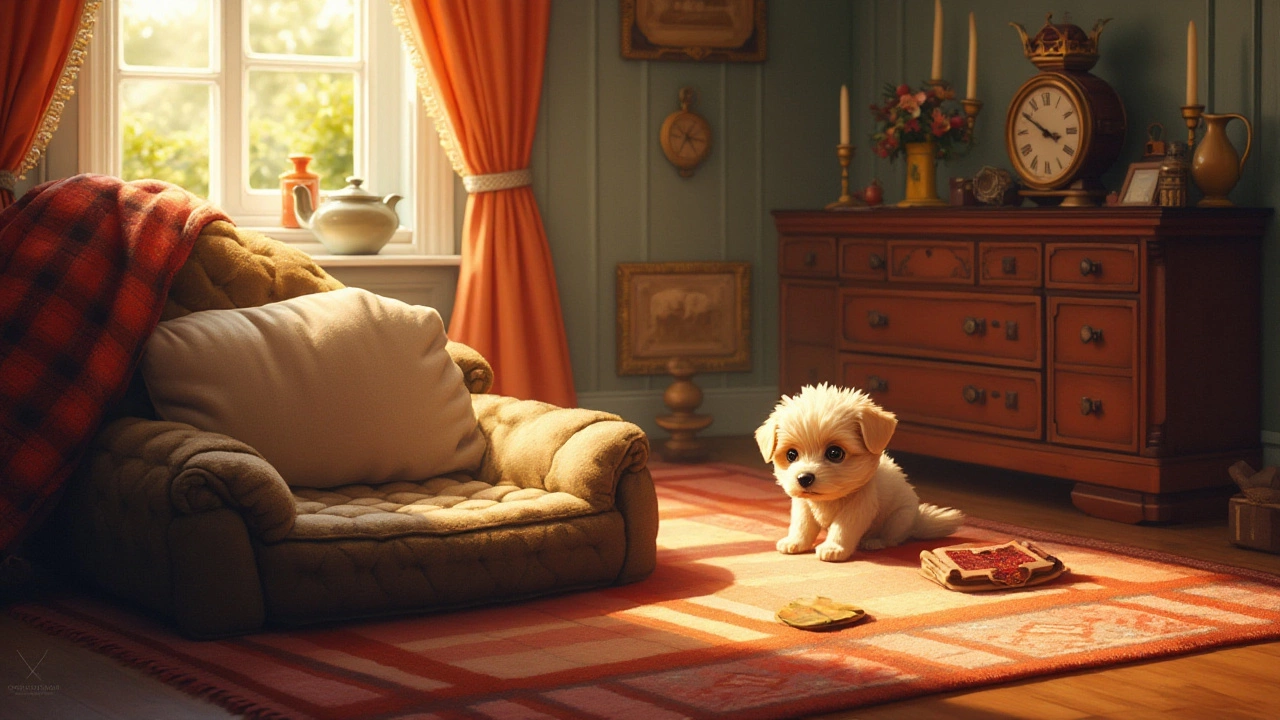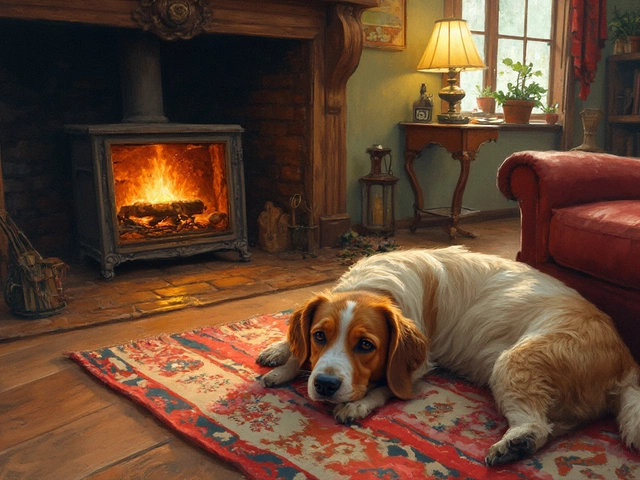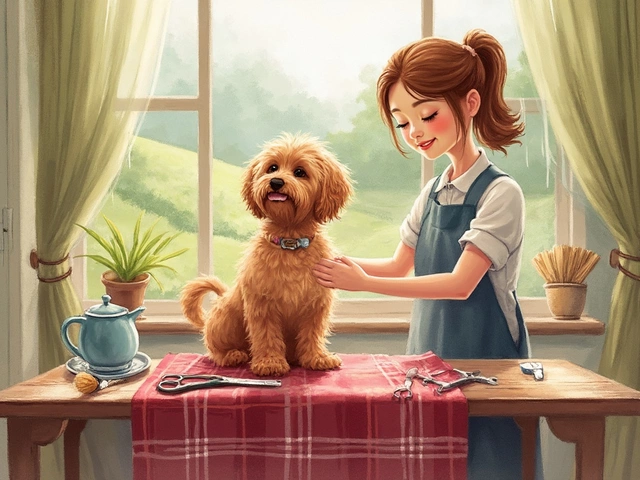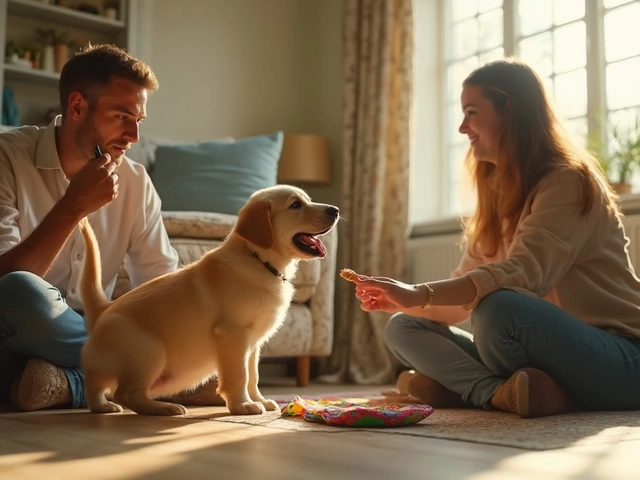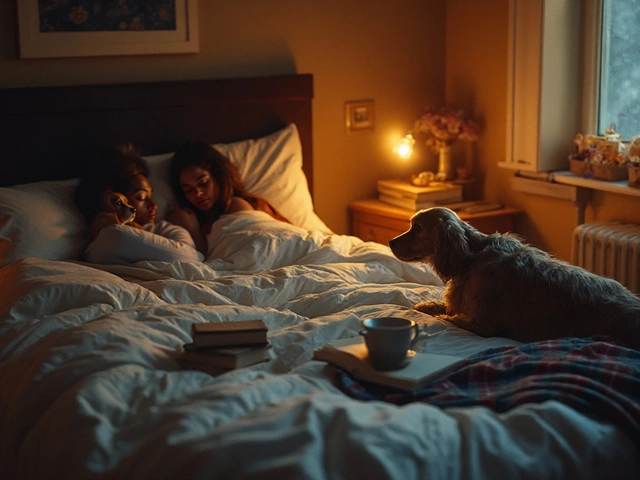Welcoming a new puppy into your home is an adventure filled with wagging tails and adorable antics. But, those first two days can be a whirlwind of excitement and challenges. It's a big change, one that requires a gentle balance of preparation and adaptability.
Before your pup sets their tiny paws in your home, getting things ready is key. Think of it as babyproofing, but for a bundle of fur. Safe spaces, cozy beds, and new toys are just the start. Then, once you bring your puppy inside, grant them some exploration time, allowing them to sniff and gaze around their new environment at their own pace.
Even the cutest puppy might struggle a bit during the first night. A combination of comforting presence and sensible routines can help alleviate any anxiety. Feeding them properly and ensuring they have enough water is also crucial in these early days.
Successfully cruising through those initial hours sets a positive tone for the days ahead, nurturing a bond that lasts a lifetime. Get ready to embark on this joyful journey, as your new furry family member settles in comfortably with every wagging step.
- Preparing Your Home Before Arrival
- First Day and Night Adjustment
- Establishing Routines and Comfort
- Feeding and Hydration Essentials
- Handling Sleep and Crate Training
Preparing Your Home Before Arrival
The excitement of a new puppy coming home is unmatched, but with it comes the pressing need to ensure your home is a safe and welcoming environment. Before you even think about the little pitter-patter of paws across your floor, there are important measures to consider. Begin with puppy-proofing each area of your home, as you would child-proof for a toddler. Remove any tantalizing but dangerous objects, such as small items that can be swallowed or cables that might resemble chew toys. It is critical to place hazardous substances, like cleaning products and certain houseplants, out of your puppy’s reach. You might be surprised to learn that common plants like lilies and azaleas are toxic to dogs, so double-check your greenery.
One of the most important preparations is designating a safe and comfortable space for your new puppy to call their own. This space should be away from the hustle and bustle—a quiet corner of a family room might be ideal. Ensure the area is equipped with a cozy bed and a few intriguing toys to welcome them. Remember not to overwhelm your pup with too many options, as two or three well-chosen toys are enough to start. Creating a designated play area or a gated space will also give you peace of mind about their safety while they roam.
Another crucial step is checking your garden or yard, if you have one. Secure fences and check for small gaps through which a curious puppy might escape. It's essential to ensure the outside area is free of chemicals used for pest control, as these can pose serious health risks. If you’re setting up a crate for transport or as a sleeping den, it should be comfortable—but also sturdy. Veterinary advisor Dr. Sophia Yin once emphasized that crates serve best as a security haven, not a prison:
"A crate, when introduced properly, can be a place of comfort and security, a place where your puppy will naturally feel safe enough to relax."Reinforce good habits by placing the crate in a location where your puppy feels included yet untroubled.
Your preparations should also include acquiring all the puppy essentials, making a checklist if necessary. Your list should include a traveling crate, bedding, food, water bowls, and an initial supply of puppy food. Check these labels to confirm you're providing the right nutrition tailored for your puppy’s growth stage. Leash, collar, and ID tags are equally important preparations. Keeping an emergency contact list, including your vet’s details, can be particularly helpful as you settle into this new routine. Consider this hands-on approach a foundation for long-term care—ensuring your puppy's health and security will make those first hours together more inviting and less frantic.
First Day and Night Adjustment
Stepping into a new home is as thrilling as it is overwhelming for a new puppy. The first day marks a significant milestone, setting the stage for future adventures together. As you carry your ball of energy through the threshold, allow them to explore while you keep a watchful eye. Start by introducing them to one room at a time to avoid sensory overload. Here, the soothing tone of your voice acts as a beacon of reassurance, helping them feel more secure in this unfamiliar environment.
When it comes to the first night, remember that it's not uncommon for puppies to feel anxious. Just like a toddler might when away from home, your puppy could whimper or cry. A snug, quiet sleeping area, preferably in a crate akin to a safe haven, can offer a comforting space. As Cesar Millan, the renowned dog behaviorist, once said,
“Dogs need their own space, a place where they feel comforted and secure.”This applies perfectly as your puppy eases into sleep after an evening of sniffing curiosity.
During these critical hours, it helps to stick to a routine. Feed them at the same time as suggested by the breeder or shelter, and ensure hydration stays consistent by filling water bowls regularly. Bear in mind that new environments can be dehydrating, so clean, fresh water is essential. A bedtime bathroom break curtails midnight incidents, paving the way for a smoother night.
Handling Midnight Woes
Puppies have small bladders, requiring patience as they adjust. The key is to remain calm if they need nighttime bathroom trips. Gently but firmly steer them toward eliminating outside, rewarding them with soft praise and a tiny treat. Bear in mind, this is a beautifully chaotic beginning, so celebrate small victories as they come. The atmosphere may feel charged with excitement and apprehension, yet each wag and whimper draws you closer.
Statistics indicate that nearly 75% of new pet owners experience sleepless nights initially, but the rewards of those first few hours are immeasurable, influencing the happy wagging days to follow. Together, with doses of patience, love, and structured attention, you and your puppy exceed the uncertainties that accompany the first day and night, embarking on a journey brimming with cherished companionship.
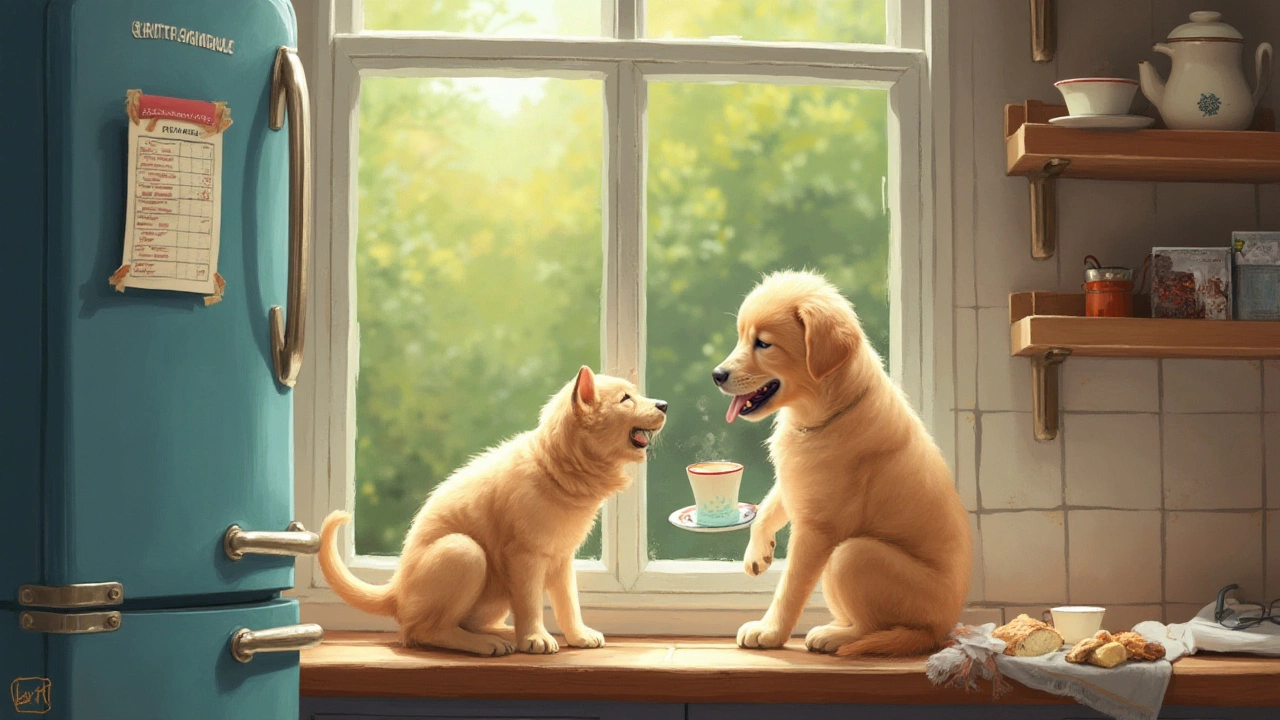
Establishing Routines and Comfort
When you bring a new puppy home, establishing a routine is essential to make them feel secure and comfortable in their unfamiliar surroundings. Puppies thrive on consistency, so developing a well-structured schedule for feeding, playtime, and potty breaks helps in managing their energy and behaviors. Routine gives them a sense of stability, especially during the first 48 hours, when everything feels novel and potentially overwhelming. Honoring this structure not only eases anxiety but also sets the stage for constructing healthy habits that benefit both you and your puppy in the long run.
Start by creating regular feeding times. Puppies, like children, need fuel evenly spaced-out to support their rapid growth. Ensure the diet is nutritionally balanced and appropriate for their age and breed, as advised by your veterinarian. As they grow, their dietary needs will alter, but in the early days, measured and frequent servings help prevent both undernourishment and overfeeding, which can lead to digestive upsets. Consistency applies to bathroom trips too; taking them out after meals, naps, and playtimes equips them to understand where and when it's appropriate to relieve themselves, reducing messes inside the home.
Playtime is another integral part of their routine. It is through play that puppies learn about their environment, develop social skills, and expend their boundless energy. Scheduling these sessions, rather than letting them occur erratically, ensures your new puppy gets enough exercise to keep them healthy and happy, while also reducing the likelihood of destructive behavior born out of boredom or excess energy. Interactive toys, puzzles, and even simple games of fetch can prove invaluable during these times, captivating their attention and strengthening your bond.
Dr. Ian Dunbar, a renowned veterinarian and animal behaviorist, once said, "A dog's lifetime is as beautiful as its twilight years." Establishing routines early secures a grace-filled aging process because their disciplined puppy years lay that solid foundation. His insights resonate in these formative first days with your puppy, advocating the importance of building good habits from the start.
As for comfort, your puppy should have a designated area that feels safe. This space might be a cozy crate or a specific corner where they can retreat when the world feels too big or their tiny paws need a rest. Make sure their spot is quiet, free from drafts, and filled with a warm bed and comfort items like soft toys. During this crucial period, your presence often adds immeasurable comfort, so try to spend ample quality time together. A familiar scent, like an old shirt of yours, can often provide reassurance when you step away.
Overall, investing effort in setting structured routines and cultivating a comforting environment translates into a smoother transition for both your new puppy and you. The lasting impact of such a thoughtful beginning can be seen throughout the life of your furry friend, underpinning the joy of sharing your life's chapters together. Embracing the learning curve, while cherishing each discovery you both make, ensures these early days are as enjoyable as they are foundational.
Feeding and Hydration Essentials
As you step into the joyous yet demanding world of owning a new puppy, mastering the art of feeding and hydration is one of the first steps towards responsible pet parenting. A new puppy's dietary needs are vastly different from those of an adult dog, requiring not only more frequent meals but also specific nutrient combinations to support their rapid growth and energy-packed lifestyles. Generally, feeding your puppy three to four times a day can provide the energy bursts they need for frolicking about and expanding their tiny worlds. Ensuring portion sizes are appropriate for their age and breed is pivotal. Consult the feeding guide on your selected puppy food for portions, and don't shy away from small adjustments based on your puppy's unique needs.
Listening to cues from your puppy about hunger and energy levels can be invaluable. Fresh water should always be readily available, considering how much energy they expend exploring and playing. A general guideline suggests that clean water should be accessible at all times, but especially during and after playtime or walks. Puppies often lap up water with an enthusiasm equalled only by their zest for life, and maintaining hydration is key for their digestion and overall health.
"Hydration is the most crucial aspect of nutrition, a fact often emphasized by veterinarians," says Dr. Jane Doe from The Puppy Care Institute.Maintaining a routine in feeding and watering not only supports their physical health but teaches your puppy a sense of daily structure.
Picking the right food can sometimes feel as daunting as deciphering a foreign language. The market brims with options and making an informed decision is pivotal. Look out for labels indicating 'complete' and 'balanced' nutrition, a statement regulated by the AAFCO (Association of American Feed Control Officials) to guarantee it meets dietary standards. Your breeder or veterinarian can offer tailored advice considering breed-specific requirements, potentially preventing common issues like digestive problems and skin irritations. Have patience through the adventure of finding what suits both your puppy's taste and health.
Sometimes, a visual guide speaks louder than words. Below is a simple table to help guide portion sizes according to weight and age, offering a useful starting point as you tune in to your new puppy's personal needs:
| Weight (lbs) | 2 Months | 3-4 Months | 5-7 Months |
|---|---|---|---|
| 1-5 | 1/4 - 1/2 cup | 1/2 - 1 cup | 3/4 - 1 1/4 cups |
| 6-10 | 1/2 - 3/4 cup | 3/4 - 1 1/4 cups | 1 1/4 - 1 1/2 cups |
| 11-20 | 3/4 - 1 cup | 1 - 1 1/2 cups | 1 1/2 - 2 1/4 cups |
Armed with this foundational knowledge, approach these first 48 hours knowing that each meal strengthens your puppy's burgeoning bond with you. It sets the stage for mutual trust and happiness, feeding both their little tummies and their zest for life.
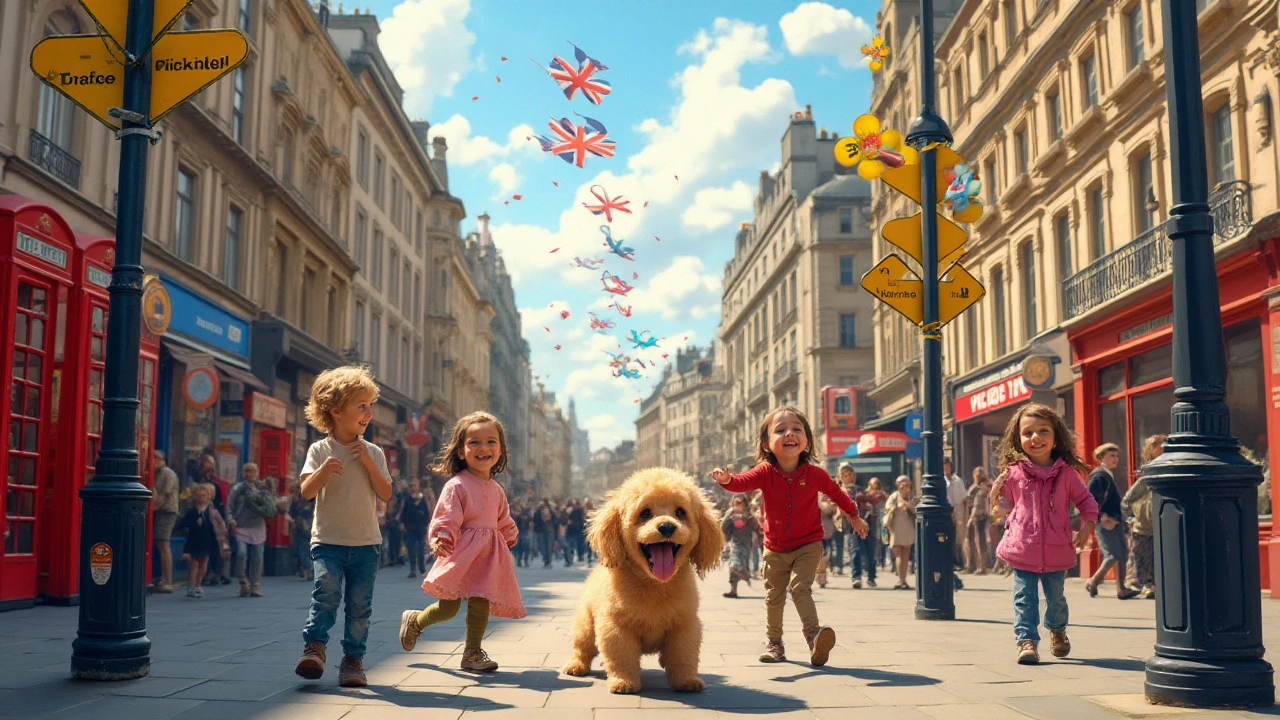
Handling Sleep and Crate Training
The first night with a new puppy can be both adorable and daunting. Puppies, just like human babies, require a comforting space to sleep peacefully and the right introduction to crate training can make a world of difference. The key is to create an inviting 'den' environment within the crate, as it taps into their instinctual love of cozy hideaways. Begin by placing a soft blanket or towel that carries the scent of their litter, bringing a sense of familiarity. Keep the crate at your bedside, letting them know you're right there, which naturally eases their anxiety and helps them settle in.
One fascinating aspect about puppies is their sleep patterns. While adult dogs usually sleep for about 12-14 hours a day, puppies often need more, sometimes up to 18-20 hours to support their rapid growth and development. To help them wind down in the evening, incorporate a relaxing routine, similar to reading bedtime stories to humans. Take them out for a potty break, engage in gentle play to exhaust excess energy, and offer some quiet moments before tucking them into the crate.
If you find your puppy whining during the night, it might be tempting to open the crate door immediately, yet patience and consistency are crucial. Allowing them brief moments to settle can teach them resilience. According to the American Kennel Club, “Crate training at home provides a sense of security for dogs and creates a safe place for dogs to retreat.”
Dr. Mary Burch, a certified applied animal behaviorist, shares, "Dogs learn to love their crate when they're introduced to it gradually. It becomes their safe haven."Understanding cries for genuine needs like bathroom breaks or hunger is also vital. If handled with gentle firmness, crate training becomes a cornerstone in managing your puppy's behavior constructively.
Interestingly, data shows that between the 4-6 month period, thanks to crate training, puppies can increasingly master bladder control (see table below). This skill, built gradually, alleviates night-time disturbances, reinforcing a proper sleep routine for both you and your puppy.
| Age (Months) | Max Hours in Crate |
|---|---|
| 2-3 | 3-4 hours |
| 4-6 | 5-6 hours |
| 6+ | 8+ hours |
By the end of 48 hours, your puppy should begin understanding their crate as a positive place. Reward progress with simple treats and affectionate praise, reinforcing that this new addition to their routine is a wonderful thing. Remember, kindness, patience, and positivity pave the way for not just surviving, but truly thriving through the first 48 hours with your new puppy.
